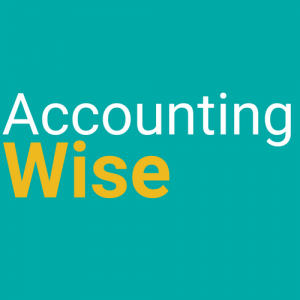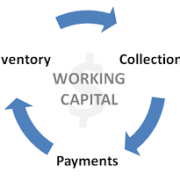Closing a limited company down – what are your options?
There are many reasons why you may be looking to close down your limited company, retirement, to go back to full-time employment, or perhaps back to being a sole trader. So what are your options, and how do you know which is best for you?
Top tip: If you’re earning enough money but are closing your limited company simply because your tax responsibilities are giving you a headache, Our limited company accounting service takes the stress out of accountancy and filing by reducing both cost and time. Our combination of software and service could be the answer to your problems!
If you’ve made your mind up that closing your company is the right thing to do, then read on to learn how to close your limited company, what your options are, and what important things you need to think about when you’re doing it.
Closing a limited company? – Tie up your loose ends first
Whether you’re looking to retire, change direction, or simply carry on the business as a sole trader, your limited company must have all its legal loose ends tied up.
This means settling any outstanding bills, collecting any money owed from your clients, and making sure you can pay for any running costs that may be incurred between now and when your company is legally wound-up (e.g. if you’re paying an accountant to finalise your last batch of returns, or employing some collection services to round up those late payers).
The good news is that these can be treated as allowable business expenses, so can reduce your final Corporation Tax bill.
VAT
If you’re VAT registered, you’ll need to inform HMRC of your intention to de-register by completing a VAT 7 form.
Once this form is received, HMRC will contact you with your deregistration date. You must continue to account for VAT until HMRC confirms your deregistration date.
You must also complete a final VAT return that takes into account things such as leftover stock or any equipment your business owns.
Corporation Tax
You must inform HMRC that your company is no longer trading so they don’t issue further reminders for Corporation Tax. How you do this depends on whether HMRC has previously asked your company to deliver (i.e. file) a company tax return.
If your company has never received a ‘notice to deliver a company tax return’, you can tell HMRC it’s dormant by phone (0300 200 3410) or post (Corporation Tax Services, HM Revenue and Customs, BX9 1AX, United Kingdom).
If your company has previously filed a company tax return or received a ‘notice to deliver a company tax return’, you’ll still need to file a company tax return online – this will show HMRC that your company is dormant. Guidance from HMRC can be found on the Gov.uk website.
PAYE scheme
You will also need to inform the HMRC that your PAYE scheme is no longer in operation. Not to worry, if you’re an Accounting Wise customer, we’ll close the scheme on your company’s behalf.
If you’re not an Accounting Wise customer, you should follow the instructions published by HMRC.
Capital gains
If you’re operating a limited company as a freelancer, there’s a good chance your equipment (laptop etc.) is owned by your company. If you personally take possession of company equipment when your company winds up, you may need to pay Capital Gains Tax on those items.
Is your company solvent or insolvent?
You’ll need to consider the following:
- Does your company have more assets than liabilities?
- Can your company promptly pay its debts?
If the answer to both of these questions is ‘yes’ then your company is solvent and you will have assets to distribute to shareholders.
If the answer to these questions is ‘no’, then your company does not have the resources to pay its liabilities and your company is insolvent.
How to close a limited company if it’s solvent
When closing your solvent limited company, you have a couple of options.
Closure/Informal strike-off
To strike off your company from Companies House, a company director needs to complete a striking off form (DS01).
This will ask you for your company name, your Company Registration Number (CRN), and the names and signatures of all (or the majority) of the company’s directors. You’ll also need to enclose a cheque for £10 from an account that doesn’t belong to the company you’re striking off.
When this has been received, Companies House will publish a notice in an official public record (The Gazette) in London, Edinburgh, or Belfast, to provide official notice to any third parties who may object to the closure (of course, if you haven’t actually traded, this shouldn’t be much cause for concern).
If no objections are raised, Companies House will confirm the closure of your company in the Gazette when three months have passed.
Any profits to distribute from your closing company will need to be fairly distributed to its shareholders – you’ll need to think about the most tax-efficient way to distribute them.
Just remember to transfer your company assets before you close it down; when a company is struck off, any bank accounts are frozen and any balances are taken by the Crown.
Members Voluntary Liquidation
A Members Voluntary Liquidation (MVL) could be a tax-efficient way of unlocking cash from your business so that your remaining profits are fairly distributed to shareholders as capital, and not dividends.
The main advantage of liquidating your company through an MVL is the ability to extract all of the assets from the company subject to Capital Gains Tax, rather than Income Tax. This could mean more money in your pocket.
However, the cost of closing via an MVL starts at around £2,250, which normally only makes it a viable option if you have more than £35,000 in retained profits. If you’re wondering which route is best for you, you should probably get professional advice from an accountant.
How to close an insolvent company
If your directors and shareholders are in agreement that your company is insolvent, you’ll require a Creditors’ Voluntary Liquidation (CVL) to shut it down. In this case, the company’s assets are allocated to the parties it owes money to.
Before you proceed, 75% of shareholders need to agree to a CVL. Once confirmed, you’ll need to speak to a licenced Insolvency Practitioner who’ll be able to advise you on your next steps. How long it will take to complete the CVL process will differ from business to business, depending on the size of the company and how complex its assets and debts are.
Once the process has been completed, the company will be struck off from Companies House’s register and will officially no longer exist.
Occasionally, if a creditor has successfully filed a winding-up petition, the court will order a business to be wound up – this is called a Compulsory Liquidation.
Make your limited company dormant
If you think you might want to trade through your limited company in the future, you always have the option of putting it ‘on hold’.
Instead of informing HMRC that you intend to close the limited company down, you can make the company “dormant”. You’ll still have to file certain tax returns, but they’ll be ‘nil returns’, meaning you just report a load of zeroes to HMRC to show them you’re not trading.
You can work as a sole trader outside your limited company in the meantime and return to working through your limited company when it makes more financial sense (bear in mind this will make your Self Assessment rather more complicated, though).
Going back to being a sole trader
Working as a sole trader can be a sensible option if your company isn’t bringing in much money, everyone’s situation can be different but we usually have a simple rule of thumb that if your annual profits from a business are less than around £30,000 you may be better off working as a sole trader. There’s less paperwork and accounting to deal with.
But wait…
Dissolving a limited company is, as you can see from the above, a bit of a hassle. There are other considerations, too – if you deregister from the Flat Rate VAT scheme, you can’t re-register for a year.
If the good times return and you decide to re-incorporate, this could leave you out of pocket.
It’d be a good idea to talk through your options with an accountant so you can be sure to make the best decision for your circumstances.
Need an accountant?
We provide simple online accounting for contractors, freelancers, sole traders, limited companies, and small businesses.
With over 500 clients, we offer a range of fixed-fee packages and bespoke solutions so you can design a service to suit you. We help with accounting, tax reporting, Self Assessments, payroll, expenses, bookkeeping, and much more.
We’re not just another software provider – we offer unlimited support and advice through our client management team and expert chartered accountants. Give us a call today on 0330 113 8442 or find out more.









